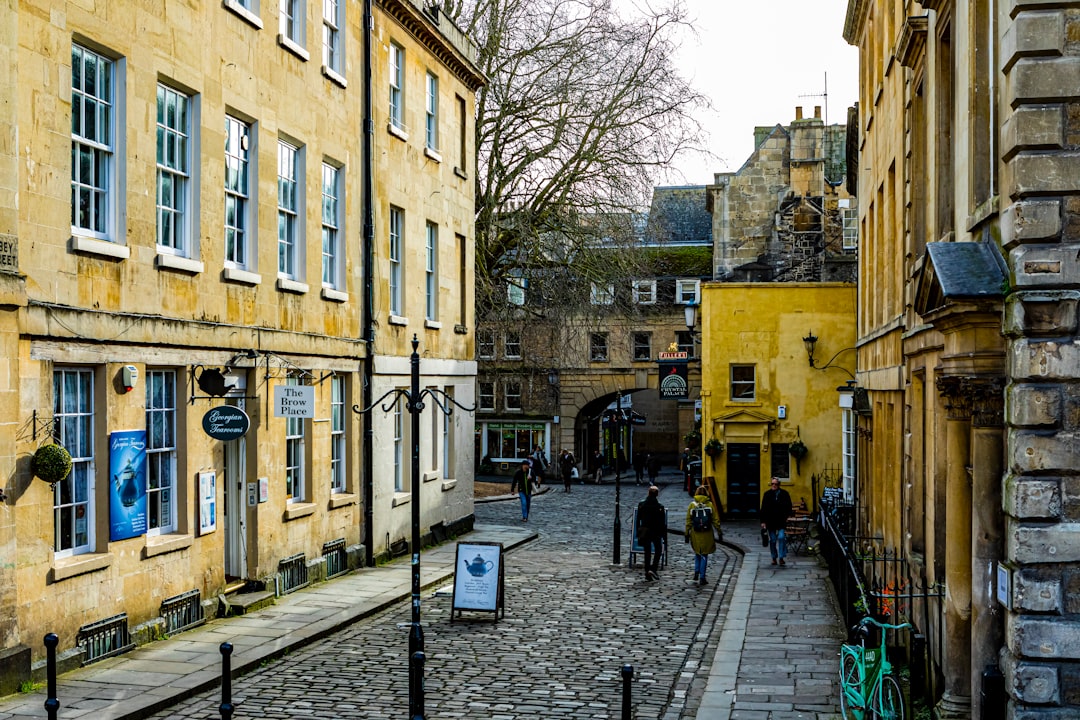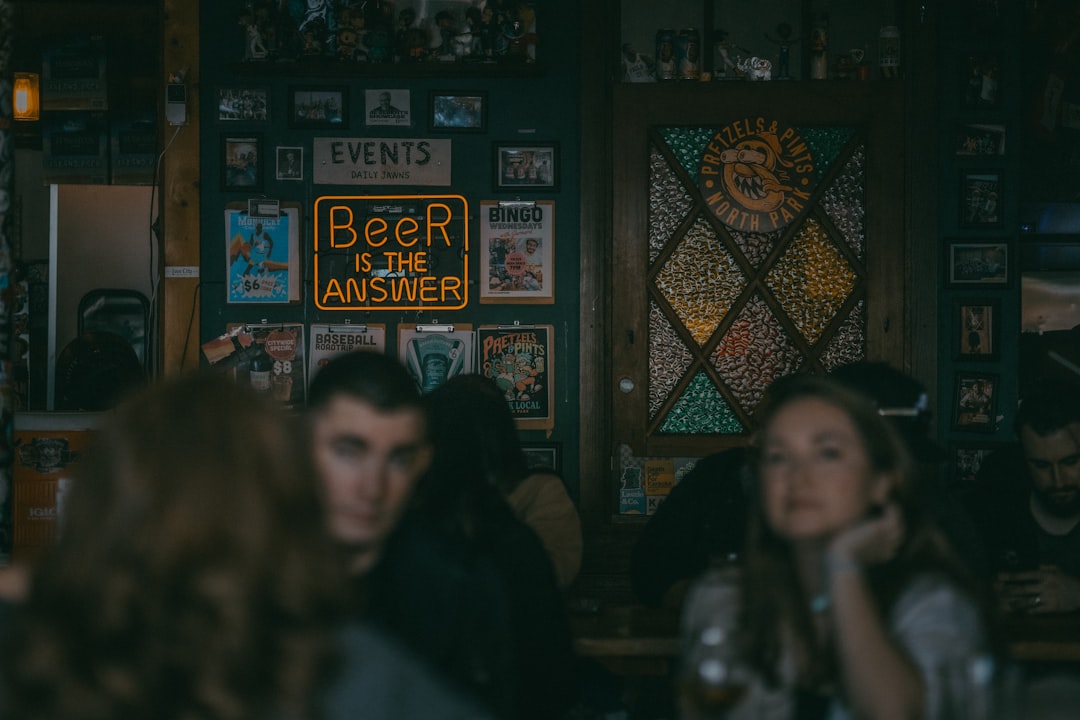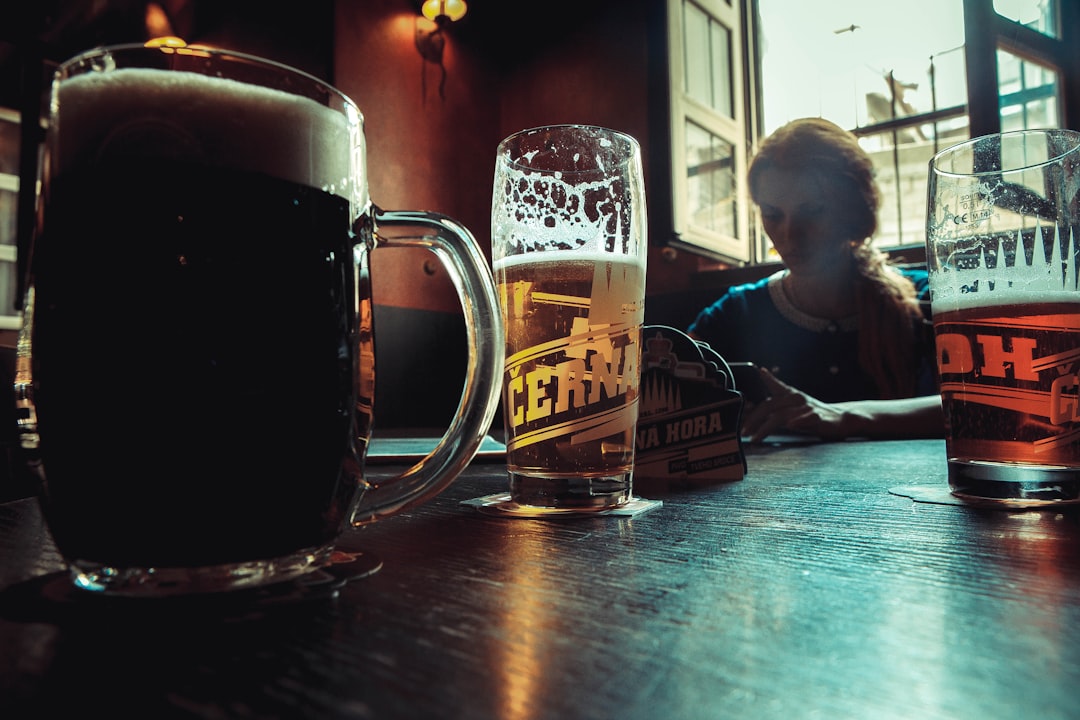

Engage prospects with a scan and streamline customer engagement with FREE QR code marketing tools by Sona – no strings attached!
Create a Free QR CodeFree consultation

No commitment

Engage prospects with a scan and streamline customer engagement with FREE QR code marketing tools by Sona – no strings attached!
Create a Free QR CodeFree consultation

No commitment
Brew pubs have rapidly evolved from niche microbreweries into vibrant community hubs, seamlessly blending craft beer production with dynamic pub atmospheres. Their growth across cities relies on both creating memorable in-person experiences and embracing digital innovation. Many establishments, however, face challenges in connecting guest interactions to actionable data, as legacy workflows and disconnected systems can result in missed insights.
Modern consumers now expect effortless transitions between physical enjoyment and digital convenience. For brew pub owners and marketers, QR codes offer a strategic advantage by transforming traditional touchpoints, such as printed menus and event flyers, into interactive gateways for feedback, reservations, and loyalty programs. This reduces missed opportunities and enables real-time capture of guest preferences, resulting in higher satisfaction and more efficient operations. A recent look at hospitality momentum highlights the QR code comeback.
With thoughtful integration, QR codes empower brew pubs to boost engagement, gather actionable data, and adapt to evolving guest interests. The steps below detail how to leverage this technology for increased revenue, smarter marketing, and a superior customer journey, ensuring each interaction becomes a growth opportunity.

QR codes bridge the gap between the physical and digital experience in brew pubs, making it easy for guests to access tap lists, book events, or explore exclusive content. When deployed methodically, they reduce friction, cut printing costs, and turn every surface into a measurable interaction. The key is to connect a simple scan to a meaningful action such as joining a mug club, reserving a brewery tour, or submitting quick feedback after a flight. Explore foundational tactics in QR codes in marketing.
To maximize engagement and minimize lost opportunities, start by mapping current analog processes to digital flows that can be reached by a scan. Printed menus, comment cards, clipboards for email sign-up, and chalkboard event lists are high-friction relics. Replace them with dynamic landing pages and forms that update in real time. Then define what success looks like: scan-to-submit rates for feedback, percentage of guests who join loyalty, and redemptions of promo codes or event RSVPs.
Modern QR platforms support real-time offer updates and seamless integration with CRM and marketing systems. This enables rapid campaign changes, detailed audience analysis, and automated follow-up so staff can focus on hospitality while your system captures and nurtures demand. Browse Sona QR’s use case library for practical examples.
Many brew pubs now use QR-based digital tap lists instead of printed menus. This shift does more than save printing costs; it gives staff control over a dynamically updated list with tasting notes, ABV, and pairing suggestions that always reflect current inventory. Guests benefit from speed and accuracy, while managers gain data on which beers attract the most attention.
Owners gain insights into which beers generate interest and who is engaging, helping to convert high-intent interactions into marketing opportunities. For example, a guest who scans the tap list and then clicks “Notify me when this stout is back” can be added to a stout-loving segment for future releases. With Sona QR, you can tag that scan, sync the interest to a CRM profile, and automatically send a release-day SMS messages or email that drives timely return visits.

Brew pubs encounter unique challenges: rotating inventory, event-driven promotions, and the need for consistent messaging across many guest touchpoints. Anonymous guests are common in a walk-in environment, and without a digital handshake you lose the signal of what they liked and when they visited. QR codes help you turn fleeting interest into measurable engagement without forcing an app download.
They also help harmonize the on-premise experience. A seasonal stout that kicks at 7 p.m. no longer leaves guests with outdated printed menus. Dynamic QR codes allow you to swap content without reprinting a thing, ensuring that guests, bartenders, and marketers are all aligned around the current offering and promotions.
In a brew pub, these benefits apply to common materials such as tap handles with mini QR tags, outdoor sandwich boards promoting trivia night, growler labels that link to new releases, and event posters that capture RSVPs on the spot. Each item becomes an actionable asset that fuels your marketing funnel and builds first-party data. For placement inspiration, check out how to display your QR codes.

Successful QR code implementation comes from matching code formats to guest journeys and outcomes. Several formats stand out for brew pubs, each aligned to specific actions guests want to take in the moment. You can generate all of these in one place with Sona QR, then manage destinations and track performance from a single dashboard.
For brew pubs, forms and web links tend to be the workhorses. Menus, events, and loyalty enrollment benefit from dynamic links, since inventory and plans change often. Static QR is sufficient for fixed destinations such as your homepage, but dynamic QR is strongly recommended for anything trackable or time-bound, including seasonal promotions, rotating taps, and recurring events.
Growth is often missed when physical and digital journeys are disconnected. The best opportunities arise at moments of high intent, such as when a guest is seated, trying a flight, or pausing at the register. By aligning QR placements with these moments, you turn curiosity into action while the guest is still in the room.
Evaluate current materials to identify gaps. Are your coasters and table tents driving to a generic homepage, or to a campaign-specific landing page with a clear call to action? Are your posters capturing RSVPs or asking guests to remember a date? Once you reassess placements through the lens of immediacy and relevance, you can reclaim revenue that would otherwise go untracked.
Analyze code placement performance regularly to spot winning surfaces. Heatmap your pub with scan data, compare conversion rates by placement and time of day, and refine designs based on what repeatedly attracts action. For measurement inspiration, see this brewery case study.

Strategic QR code deployment addresses familiar pain points while unlocking new engagement. The most effective use cases map to common guest interactions and lead directly to measurable outcomes that impact revenue and retention.
Mapping these interactions to the guest journey, from discovery to repeat visits, ensures minimal friction and complete engagement data. Every scan builds your first-party data and reveals what your audience values.
Brew pubs often struggle to retarget prospects from offline or anonymous sources. QR scans provide direct engagement signals that reveal interest, context, and timing. By deploying multiple codes across touchpoints, you can automatically segment audiences based on behavior and nurture them with personalized follow-up that respects their preferences.
Start by assigning unique QR codes to each placement and intent. A code on a seasonal poster attracts a different audience than a code on a menu, and the follow-up should reflect that. When a guest scans for an IPA release calendar, tag them as hop-forward. When they scan a barrel-aged flight, associate them with limited-release interest. With Sona QR, these tags can sync with your CRM and ad platforms so you can build lookalike audiences, trigger messages, and measure downstream impact.
Distinct audience groups in a brew pub include first-timers versus regulars, locals versus tourists, IPA loyalists versus lager fans, and event-goers versus takeout buyers. By tagging scans accordingly, you can send a locals-only happy hour offer, announce a new West Coast IPA to hop fans, or invite private event browsers to a venue walkthrough night.
Consistent messaging and connected experiences are essential for brew pub growth. QR codes can tie together your offline and digital marketing so that every guest touchpoint reinforces your brand and captures data for better decisions.
Centralized QR management through a platform like Sona QR ensures consistent branding, holistic data collection, and improved performance across in-person and digital channels. You can manage codes at scale, keep destinations current, and measure impact by channel or placement.
To avoid common pitfalls and drive measurable impact, approach QR code campaigns with a plan. The following framework helps you define goals, pick the right code type, design for action, deploy in high-impact places, and optimize based on performance. Before you print a single coaster or poster, decide what success looks like and how you will attribute it.
Modern platforms simplify this process. Sona QR provides dynamic codes, design customization, real-time analytics, and integrations with CRM tools, which means you can adjust campaigns without reprinting and let automation handle follow-ups. This reduces manual work, speeds optimization, and keeps your team focused on hospitality.
Clarify the single outcome you want from this campaign. For example, drive RSVPs for a beer dinner, collect pre-orders for a limited release, or enroll guests in a loyalty program tied to seasonal visits. A sharp goal will determine your code format, landing page content, and success metrics.
Static QR codes point to a fixed destination and are sufficient for evergreen content. Dynamic QR codes let you edit destinations, add tracking parameters, and integrate with analytics, which is crucial for rotating offerings, limited campaigns, and ongoing optimization.
Your QR code should be on-brand and unmistakably actionable. Pair the code with a benefit-focused call to action and a frame that invites the scan. Color can be used, but maintain high contrast and avoid overly intricate patterns that reduce readability.
Place codes where your audience already looks. Integrate them into table tents, coasters, bar backs, outdoor signs, and event passes. Consider eye height and line of sight, and ensure the code size fits the distance, as tiny codes on distant posters frustrate guests.
Launch is the beginning, not the end. Use analytics to see when, where, and how people scan. Watch for drop-offs after the scan, then iterate on copy, design, or destination content to increase completion rates.

Scans must lead to measurable outcomes for true business impact. If you only count scans, you miss the story that matters: which placements sparked RSVPs, which menus led to upsells, and which loyalty scans converted into repeat visits. The goal is to connect scans to concrete actions such as bookings, club sign-ups, reviews, or purchases, then use those insights to guide marketing spend and operational decisions. See a brewery case study on tracking effectiveness.
With industry-specific dashboards and integrations, pubs can attribute scans to locations, events, and media, then connect engagement with point-of-sale data where possible. Sona QR and Sona.com extend this further: Sona QR captures scan details, while Sona.com ties those touchpoints to buyer journeys through identity resolution and multi-touch attribution. Sona is an AI-powered marketing platform that turns first-party data into revenue through automated attribution, data activation, and workflow orchestration. Learn more on Sona.com.
Sona QR captures real-world engagement, and Sona.com turns that engagement into insights you can act on. Together they enable a connected performance marketing strategy where offline interest can be measured, nurtured, and converted at scale.
QR codes deliver the most value when they are intentional, visible, and connected to a strong follow-up engine. Prioritize clarity of the call to action, consistency in design, and automation that keeps the journey moving after the scan. The following tips reflect the media and moments most common in brew pubs.
Creative deployment examples keep your program fresh. Print scannable codes on flight trays that open a flavor guide and a quick poll, then reward completion with a small discount on a crowler to go. Add a code to growler tags that registers the vessel for refill perks, captures preferences, and invites the guest to a new release tasting night.
QR codes offer brew pubs a practical tool for transforming every guest interaction into a trackable opportunity. By capturing engagement signals, connecting offline and digital campaigns, and routing data into sales and marketing platforms, brew pubs can reach the right customers with the right message at the right time. The result is a more connected experience, stronger loyalty, and measurable impact that sustains growth in a competitive craft market.
For growth-driven brew pub marketers, QR code integration is a strategic solution to persistent data and guest engagement challenges. Each scan deepens customer understanding, transforming missed opportunities into actionable insights. With Sona QR to generate and manage dynamic codes, and Sona.com to attribute engagement to revenue, you can personalize outreach, automate follow-up, and build lasting relationships that support both near-term gains and long-term success. Start creating QR codes for free.
QR codes have transformed brew pubs from traditional tasting spots into interactive, data-driven engagement hubs. Whether it’s attracting new craft beer enthusiasts, enhancing the in-pub experience, or promoting exclusive events and offers, QR codes replace static menus and flyers with instant, mobile-friendly interactions that capture valuable customer insights. Imagine knowing which beer promotions spark the most interest or seeing real-time engagement during your busiest hours.
With Sona QR, brew pubs can effortlessly create dynamic, trackable QR codes that update instantly—no reprinting needed—and connect every scan directly to measurable outcomes like increased foot traffic and sales. This means smarter campaigns, better customer retention, and a competitive edge in the thriving craft beer scene.
Start for free with Sona QR today and turn every scan into a loyal patron, a sold-out event, or your next best-seller.
Brew pubs combine craft beer production with a lively pub atmosphere, serving beer on-site and creating community hubs, whereas traditional breweries focus mainly on beer production for distribution.
Brew pubs typically offer a rotating selection of craft beers including seasonal stouts, IPAs, lagers, barrel-aged flights, and limited releases reflecting current inventory.
Look for brew pubs that engage customers with dynamic tap lists, events, and loyalty programs often promoted through digital tools like QR codes for up-to-date information and special offers.
Yes, many brew pubs host events such as trivia nights, live music, beer dinners, and limited release tastings, which guests can RSVP to easily via QR codes on posters or digital displays.
QR codes allow guests to access digital menus, book events, join loyalty programs, submit feedback, and claim discounts quickly without app downloads, creating seamless physical-to-digital interactions.
QR codes reduce printing costs, provide real-time updates, track guest engagement, enable targeted marketing, and offer measurable insights into customer preferences and behaviors.
Common placements include tables, coasters, tap handles, posters, flyers, receipts, merchandise tags, and packaging to match guest behavior and moments of high intent.
Brew pubs use web links for menus and tours, forms for feedback and RSVPs, social action codes for follows and shares, Wi-Fi access codes, and coupon codes for discounts and giveaways.
They track scan rates, form completions, coupon redemptions, event RSVPs, and link scans to sales and loyalty data using analytics platforms integrated with CRM systems.
Guests gain instant access to updated beer lists, event sign-ups, exclusive offers, loyalty programs, and can provide feedback conveniently, enhancing their overall pub experience.
Define clear goals, choose the right QR code type, design for easy scanning with clear calls to action, deploy codes strategically, and continuously track and optimize campaign performance.
By assigning unique QR codes by placement and purpose, brew pubs can tag guest interests, track location and timing of scans, and sync data with CRM for personalized marketing and retargeting.
Yes, QR codes convert guest interactions into measurable actions like bookings, club sign-ups, and purchases, enabling targeted follow-up and optimized marketing that drive repeat visits and sales.
Use Sona QR's trackable codes to improve customer acquisition and engagement today.
Create Your FREE Trackable QR Code in SecondsJoin results-focused teams combining Sona Platform automation with advanced Google Ads strategies to scale lead generation

Connect your existing CRM

Free Account Enrichment

No setup fees
No commitment required

Free consultation

Get a custom Google Ads roadmap for your business






Launch campaigns that generate qualified leads in 30 days or less.
